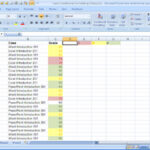Divx is a method of taking DVD videos and crunching them into a file that will fit a CD instead of a DVD, without much noticeable quality loss, with very few exceptions. How is this possible?
The first thing to consider is how DVD’s are made. The DVD format does not do much in the way of compression on the individual video pictures, and the sound is captured in WAV format, which is not a size economic format. The easiest way to explain the essence the difference between DIVX and MPEG4 as opposed to DVD formatting is like the difference between Bitmap Imaging and Jpeg. You can take one large bitmap, convert this to a jpeg and have only a fraction of the file size, and if you tune your graphic program right you really can’t see much difference. There is more to it than simply crunching each frame into Jpeg images, there are a lot of factors that are taken into account, like parts of a picture that are stationary like buildings or mountains in the background. Divx isolates the action area’s of the screen, and only works on the motion aspect of each from in those area’s and uses the same motionless back ground. Sometimes this causes some area’s where pixilation or other inconsistencies might appear. Wav format used for sound is about the same as what is used for music CD’s, and most people are familiar with MP3 formatting, and how many song’s can be put on a CD if you crunch them into MP3 first.
Just like MP3 format, when converting a video to Divx you can adjust the bitrate to increase the quality of the video., there are also other adjustments that can be made, but to save space I won’t get into those here. With the latest Divx release, Divx has automated a lot of the technical tweaking for improved performance so even the technically challenged can crunch a video and adjust the quality to their liking.
For most videos, you can set the bit rate between 750 and 850, use Divx’s default balance between quality and speed, and unless your scrutinizing every minute of the video, up close and personal, you really can’t see much loss if any. Sitting across a room and watching a crunched video is just fine. The new release of Divx also has a nice feature, it is a bitrate calculator. When you open the IFO file in a program like Flask Mpeg, it gives you a total time for the movie. see image
remember this time for the Divx Calculator. Select your movie track and sound track options, which are normally preselected for you.
On the flaskMpeg menu bar, select options>output format options:
This will bring up the output choices, or the codex you wish to use to compress this video:
For Divx, you must select the Divx codec in the video codex window, and in the bottom window for avi formatting, (Divx saves in AVI format), you must select Fraunhofer IIS MPEG Layer-3 codec. When this is selected, in the window on the right you will see a choice of audio bitrates. If you scroll down to the 48 KBit/sec / 22,050 stereo, you will get a nice rich quality sound without eating up a lot of your CD space. Most people will not notice a difference between 48 KBitrate and 96 KBitrate, and this will also leave more room for your video quality. Now click the configure button and this will bring up the Divx Video configuration menu.
On the main menu, select home theater profile, then select the calculator icon in the rate control. the Home Theater profile is 720X480 which is the DVD default image size. Enter the total time, frame rate, (29.97 fps in the U.S.A for TV), how big you want the file to be, (a 700 Mb CD or larger to fit on DVD-R’s), and your audio bitrate. Put the audio bitrate at 44,100 stereo, (22,050 per channel), and while you are doing all this, Divx will automatically set the video bitrate to make the movie fit into the final video size you have selected.
Notice I entered 1 hour and 30 minutes but FlaskMpeg showed me a total movie time of 1:28. I do this because the desired bitrate does not always calculate exactly due to changes in movie scenes and other variables, so to leave myself a little headroom I round to the next minute or two up to insure I get a movie that will fit on a standard CDR. Exit the calculator by selecting OK, and you are ready to go.
Notice from the previous image the bitrate was originally 850, and now after entering the specs for the movie, Divx has calculated that it can compress the movie at a bitrate of 1029, yielding a higher quality movie. If you reenter the calculator section you will have to go through the above process again.
Next, if you want to slow down the crunching process and increase the quality, you can slide the tab in the blue and orange portion of the Divx option window and change for higher quality and slower speed, or lower quality and faster compression. On most movies I leave this at the default “3”, for a balanced between speed and quality. There are a few movies especially where you have a lot of water reflection on an object, I may increase the file size and adjust this option for higher quality, but for most movies 3 seems to be fine for me. see below
Once you select OK on the main Divx menu, you will go back to FlaskMpeg. Now select Options>Advanced and a new window will come up, and this will give the options that Flask Mpeg will control. Working from back to front, don’t worry about the general tab, on the files tab select the directory and name of the video clip you are crunching. on the post Processing tab, if you are using the Divx balanced default, select the bilinear filtering, (faster acceptable quality). on the Audio tab, select the two radio buttons, Decode Audio and 44,100, (if this is what you previously selected). On the video tab, you can select a size for your crunched video, but to preserve as much integrity as possible I click the “don’t resize” box, the frame rate for most american 0DVD’s and video cams is 29.97, and also select the ‘Deinterlace Output’ box.
One more small feature you may be interested in with FlaskMpeg is right below the flask it button marked ‘Audio’. If you click this button you will receive a dialog box and on the far left is one called dynamic compression. What this feature will do is, you can compress the volume of the overall video. I use this with the slide bar set half way. A lot of movies get so quiet when people are talking you can barely hear them, but when the action starts or the music plays, it gets so loud your windows are rattling. This feature allows you to reduce the drastic range of volume and makes the quiet portions louder and the loud portions quieter balancing things out a little. If you over compress, it will make the sounds flat, but at half way you still have dynamic range without the drastic changes in volume.
Now you are ready to hit the Flask it! button. Many times this will bring up the Divx codec box again, be sure to reselect the Fraunhofer IIS Mpeg 3 and the correct bit rate, click OK and your video begins crunching. Video crunching does take some time, but with my 1.6 Ghz Dual core laptop I can crunch at very near twice the speed, in other words a 90 minute program can crunch in 45 minutes.
One of the biggest advantages to using Divx is crunching quality video for Internet use. Since it crunches the movies so small and yet preserves a high quality replay, it is ideal for streaming, unfortunately very few 0websites have incorporated this feature yet.
Crunching videos is for archiving your own videos, I do not nor will ever condone crunching of copyright materials, most of which are copy guarded anyway. The purpose of this is because so many video camera’s are now using DVD type formats and are very size intensive. By crunching your videos using Divx or other Mpeg4 software’s, you can store many hours, (12-15 typically), of video on one DVD-R or about 1.5 to 2 hours on one CDR without losing the quality and enjoyment. There are also many DVD players out now that support the Divx format so you can view your own crunched videos.
All references to Divx and FlaskMpeg are for educational references, and are copyright and trademarked repectively.
Reference:
- Daily Sales Online, www.dailysalesonline.com




